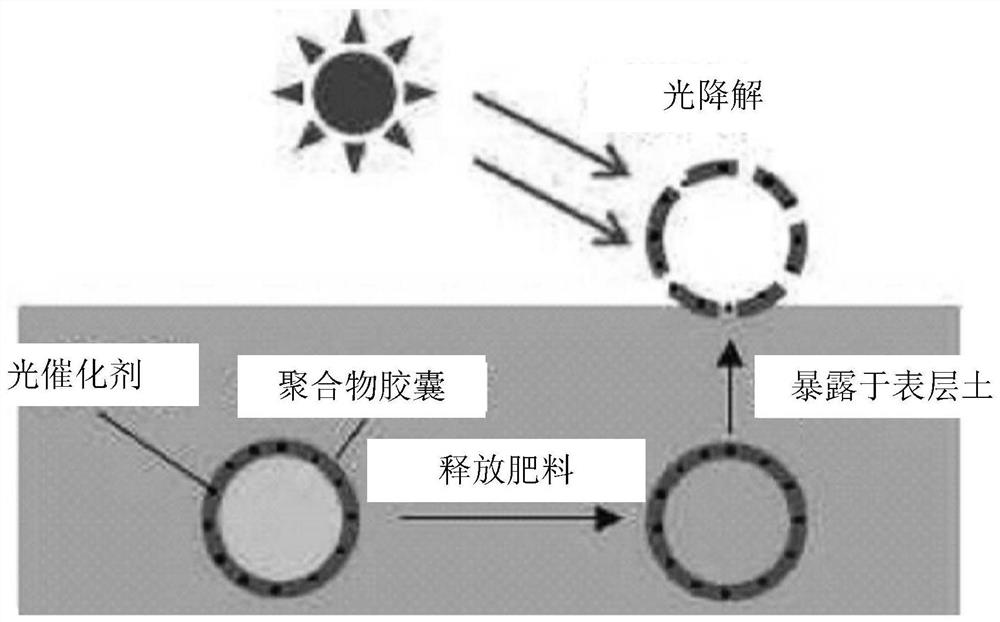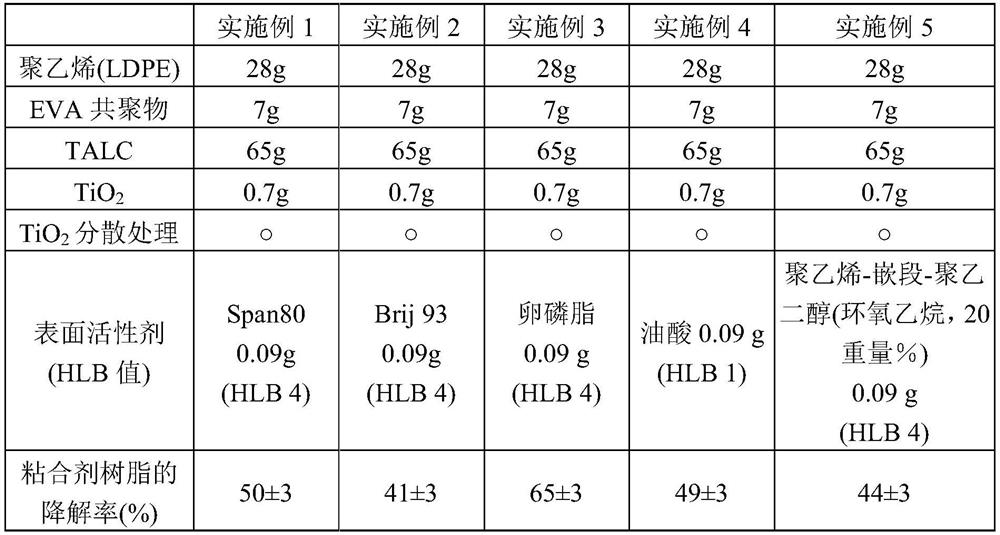Controlled release fertilizer
A technology of controlled-release fertilizers and fertilizers, applied in the direction of fertilizer mixtures, layered/coated fertilizers, solid/semi-solid fertilizers, etc., which can solve problems such as unsuitable controlled-release fertilizers
- Summary
- Abstract
- Description
- Claims
- Application Information
AI Technical Summary
Problems solved by technology
Method used
Image
Examples
Embodiment 1 to Embodiment 5
[0059] (1) Preparation of photocatalytic composites
[0060] 0.09 g of the surfactant shown in Table 1 below was dissolved in tetrachloroethylene, and TiO in the amount shown in Table 1 below was mixed thereinto 2 (average particle diameter of primary particles: 21 nm), and the mixture was sonicated and stirred for 20 minutes. Thus, a dispersion of a photocatalytic composite in which a surfactant is bound to the surface and inside of an aggregate of inorganic fine particles is prepared.
[0061] (2) Preparation of controlled release fertilizer
[0062] The dispersion solution of the photocatalytic composite prepared above, polyethylene [LDPE, MI (melt index, 190° C., load 2.16 kg, ASTM D1238), prepared above was used in the amount shown in Table 1 below: about 8 g / 10 min, D (Density): 0.925g / cm 3 ], ethylene vinyl acetate copolymer [MI (melt index, 190°C, load 2.16kg, ASTM D1238): about 1.8g / 10min, D (density): 0.94g / cm 3 , vinyl acetate content of about 20% by weight, and...
experiment example 1
[0071] Experimental example 1: Comparative experiment of photodegradation characteristics
[0072] 5 g of each of the controlled-release fertilizers of Examples and Comparative Examples and the coated fertilizer of Comparative Examples were taken, and pinholes were made for each fertilizer granule. Degradation evaluation was performed on the coating film remaining after the internal fertilizer was completely released.
[0073] Using Suntest CPS+ device (ATLAS) at 50°C with 400W / m 2 The intensity of the light with a wavelength of 300nm to 800nm is irradiated onto the coating film.
[0074] Then, when light was irradiated for 224 hours under the above conditions, the degradation rate of the binder resin obtained from the weight change of the coating film was determined by the following general formula 1, and the results are shown in Table 1 and Table 2 below, respectively.
[0075] [Formula 1]
[0076]
[0077] [Table 1]
[0078]
[0079] [Table 2]
[0080]
[...
experiment example 2
[0082] Experimental example 2: TiO 2 Measurement of Z-average dispersed particle size
[0083] Use a dynamic light scattering instrument (Malvern Zetasizer Nano ZS90) to measure the dispersion solution of the photocatalytic composite of Example 1 and the TiO-containing solution of Comparative Example 1 2 Dispersion of TiO in solution 2 The z-average dispersed particle size.
[0084] The results are shown in Table 3 below.
[0085] [Table 3] TiO 2 Z average dispersed particle size
[0086] Example 1 Comparative example 1 TiO 2 Z average dispersed particle size (nm)
556 About 2.0×10 4
[0087] As shown in Table 3, it is confirmed that the z-average dispersed particle diameter of the dispersed solution of the photocatalytic composite of Example 1 is about 300 nm, therefore, the TiO used 2 The particles are uniformly dispersed and form aggregates of inorganic fine particles having a relatively small average particle diameter.
[0088] On ...
PUM
| Property | Measurement | Unit |
|---|---|---|
| diameter | aaaaa | aaaaa |
| diameter | aaaaa | aaaaa |
| diameter | aaaaa | aaaaa |
Abstract
Description
Claims
Application Information
 Login to View More
Login to View More - R&D Engineer
- R&D Manager
- IP Professional
- Industry Leading Data Capabilities
- Powerful AI technology
- Patent DNA Extraction
Browse by: Latest US Patents, China's latest patents, Technical Efficacy Thesaurus, Application Domain, Technology Topic, Popular Technical Reports.
© 2024 PatSnap. All rights reserved.Legal|Privacy policy|Modern Slavery Act Transparency Statement|Sitemap|About US| Contact US: help@patsnap.com










